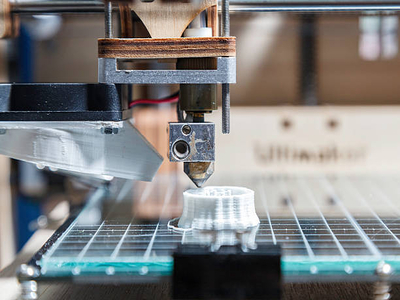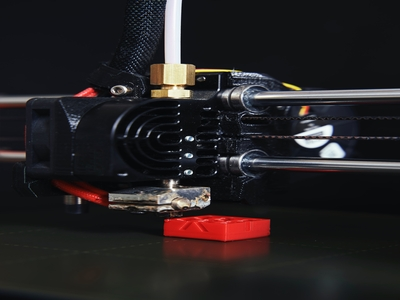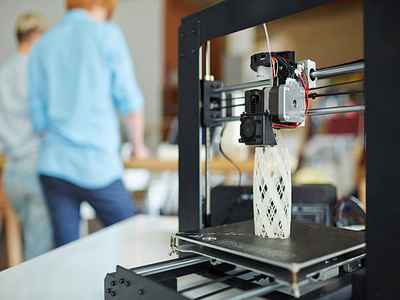When it comes to 3D printing, warping is one of the biggest problems you’ll face. It can cause your print to become distorted and can be a challenge to fix.
So how do you prevent 3D print warping?
You can prevent warping by using a heated build plate, making sure it’s level, and using brims or rafts during the printing process.
We’ll discuss what you need to know about how to prevent 3D print warping, the causes of warping, and provide tips for troubleshooting warped prints!
What is Warping?

Warping occurs when the layers of your print cool at different rates and is more prone to happen on large prints that have a large surface area.
When layers cool at different rates, they contract or expand at different rates, which then leads to distortion.
It can also be caused by printing with materials with a high thermal expansion rate, such as ABS plastic.
Why Does it Occur?
Warping occurs when the plastic cools and shrinks at different rates.
Several factors can cause this:
- Inconsistent Bed Temperature: If your bed is too cold, the plastic will cool too quickly and contract, causing warping, especially on larger prints.
- Poor Adhesion to the Build Plate: If your first layer does not stick well to the build plate, the print can start to warp as it progresses, so carefully choose the build plate.
- Imperfections in the Build Plate: Small imperfections in the surface of the build plate can cause warping as well.
Read our related article, Gaps in First Layer 3D Print to see how to get the perfect first layer!
How to Prevent 3D Print Warping
Now that we know some of the reasons why warping can occur, let us take a look at how you can prevent it from happening in the first place.
1. Use A Heated Build Plate
One of the best ways to prevent warping is to use a heated build plate as it will help keep the plastic consistent as it cools and contracts.
2. Ensure The Build Plate Is Leveled Correctly
Another critical factor is to make sure that the build plate is level to avoid warping during printing.
Read More: DIY 3D Printer Bed Leveling. This guide covers the steps to level your printer bed!
3. Use a Brim Or Rafts

When printing a 3D model, it is essential to consider the relationship between the print bed and the surrounding environment.
If the room or building temperature fluctuates wildly, this can lead to warping and other issues in the finished product.
Additionally, simple contact between the model and the build plate may cause it to melt unevenly or even warp completely.
Many 3D printers use a raft as an added layer of support between the model and build plate to address these issues.
Rafts are made up of a thick grid of material that helps evenly distribute heat throughout the model, preventing significant variations in temperature that can lead to problems.
Additionally, raising the model off of the build plate on floating supports reduces any direct pressure on the model that might otherwise melt too rapidly or lose its shape early on in the process.
In short, using a raft adds a level of protection against heat-related defects in 3D-printed models, resulting in higher-quality final products.
The informative video below discusses what warping is and how to stop it on an FDM 3D printer (such as an Ender or Prusa printer).
Read our related article on the Best Way to Remove Brim From 3D Print. Removing brims doesn’t have to be hard! Here are a few ways to do it without hurting your prints!
Troubleshooting Warped Prints
If you find that your print has already started to warp, there are a few things you can do to try and fix it.
1. Use A Fan
When constructing 3D prints, paying close attention to temperature regulation is essential to prevent warping and other problems.
One common way to help ensure a good print is to turn the fans off during the first few layers of the print.
This allows the bottom layer of plastic to maintain its temperature and avoid excessively cooling due to air circulation.
If necessary, you can gradually increase fan speed as the print progresses.
Increasing fan speed helps the top layer of the project stay warm while remaining fast enough to avoid contact with any cool air.
2. Apply Heat
You can try applying heat to the build plate if the plastic has already cooled and contracted.
This will help to loosen the plastic and allow it to expand back into its original shape.
3. Apply An Adhesive
It’s essential to ensure that the print surface is smooth and clean before printing, as this will help prevent warping and improve adhesion.
Any traces of oil or grease on the surface will worsen the adhesion, so it is essential to ensure that it is completely clean.
The best way to do this is to use a lint-free cloth to remove any dust or debris and then use a mild solvent such as isopropyl alcohol to remove any residue.
Once the surface is clean, you can begin printing.
If the adhesion is still poor, you can try using a primer or adhesive spray before printing to improve the print adhesion and prevent warping.
Read More: What Do You Clean a 3D Printer Bed With? Here are the best ways to clean various types of adhesion!
4. Cooling

Any 3D printing enthusiast knows that warping is one of the most common 3D printing problems and occurs when the materials used cool unevenly.
This can be caused by a lack of cooling in many cases, but excessive cooling can also lead to warping.
Heat build-up can cause materials to expand and contract unevenly, leading to distortion if there is insufficient cooling.
On the other hand, if cooling is too aggressive, it can cause materials to cool too quickly and create stresses that lead to warping.
As a result, it is essential to find the right balance when cooling 3D prints.
By ensuring that prints are correctly cooled, you can minimize the risk of warping and produce high-quality prints.
5. Use A Front-Side Door
If you have a front-side door, you can open it to help cool the print down evenly, and prevent warping and distortion.
6. Change Your Slicer’s Setting
If you still have trouble with warping, you can try changing your slicer’s settings. This can help improve the plastic adhesion to the build plate and prevent warping.
7. Adjust The Initial Layer Settings
If you find that your print is still warping, you can try adjusting the initial layer settings. This can help improve the plastic adhesion to the build plate and prevent warping.
Conclusion
Warping is typical when printing with plastic, but there are several ways to prevent it from happening.
Likewise, if your print is already warping, there are some troubleshooting techniques you can try.
These tips we have discussed should help you produce high-quality prints without any issues.
READ MORE